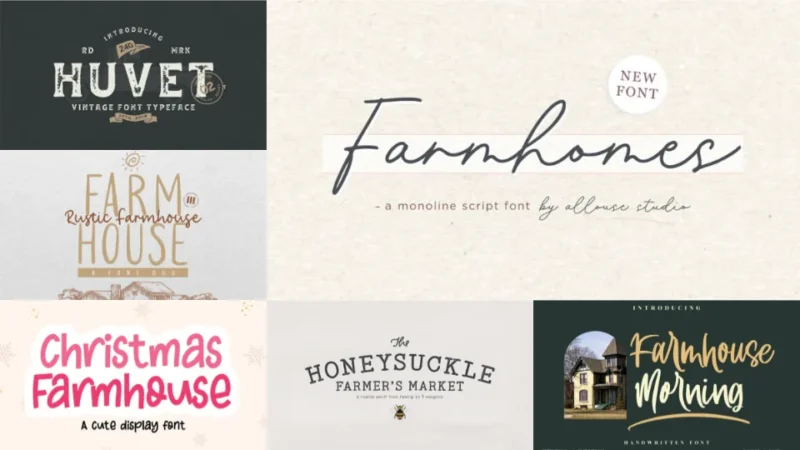In this article:
- The Best Farmhouse Fonts to Try in 2025
- What Makes a Font Feel "Farmhouse"?
- Where Can You Use Farmhouse Fonts?
- When to Avoid Farmhouse Fonts
- How to Choose the Perfect Farmhouse Font
- Pairing Farmhouse Fonts Like a Pro
- Tips for Designing with Farmhouse Fonts
- Farmhouse Font Alternatives
- Common Farmhouse Font Questions
- The Evolution of Farmhouse Typography
- Creating Your Own Farmhouse Lettering
- Conclusion: Bringing Farmhouse Charm to Your Designs
There’s something magical about walking into a perfectly styled farmhouse kitchen. You know the one—shiplap walls, vintage mason jars, and hand-lettered signs that look like they’ve been hanging there for generations. That warm, welcoming aesthetic doesn’t happen by accident, and neither does the typography that brings it to life.
Farmhouse fonts are the secret ingredient to capturing that cozy, rustic charm we all crave. Whether you’re designing a wedding invitation, creating signage for a farm-to-table restaurant, or crafting the perfect Etsy listing, the right farmhouse font can transform your design from “meh” to “magnificent.”
In this comprehensive guide, we’ll explore everything you need to know about farmhouse fonts—from what makes them feel so authentically rustic to how to use them in your own projects. So grab your favorite mug of coffee, settle into your comfiest chair, and let’s dive into the world of farmhouse typography!
The Best Farmhouse Fonts to Try in 2025
Not all farmhouse fonts are created equal. Some feel too polished, others too cluttered. The best ones strike that perfect balance between rustic and refined. Here are my top picks:
Farmhouse rustic font
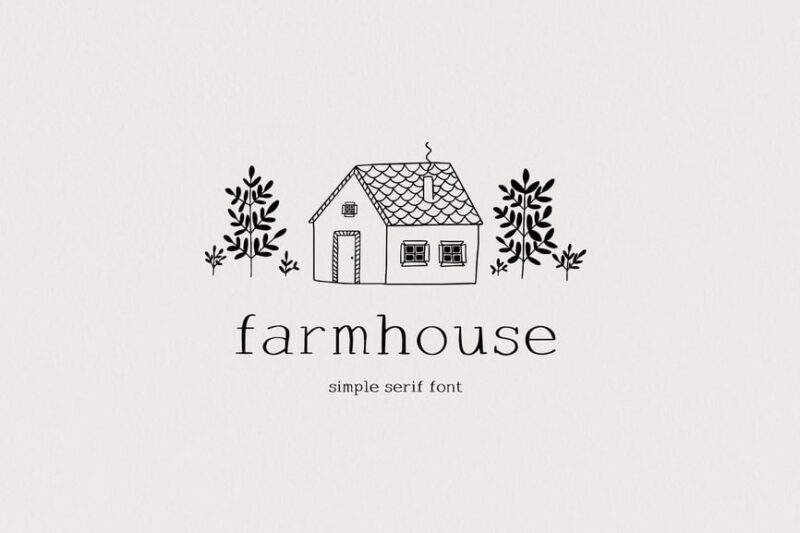
This charming farmhouse font captures the essence of rustic country living. With its serif design, it’s perfect for creating authentic farm-inspired designs and branding materials that evoke a sense of pastoral simplicity.
Cottage & Farmhouse Font
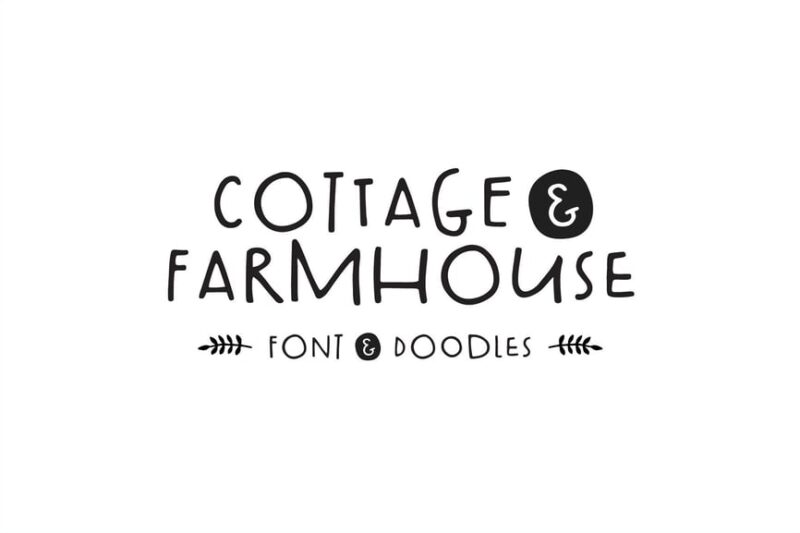
Embracing the cozy charm of rural life, this farmhouse font combines script and handwritten styles. It’s ideal for designers seeking to infuse their projects with a warm, country aesthetic, perfect for farmhouse-themed branding and packaging.
Rustic Farmhouse – An Aesthetic Font Duo
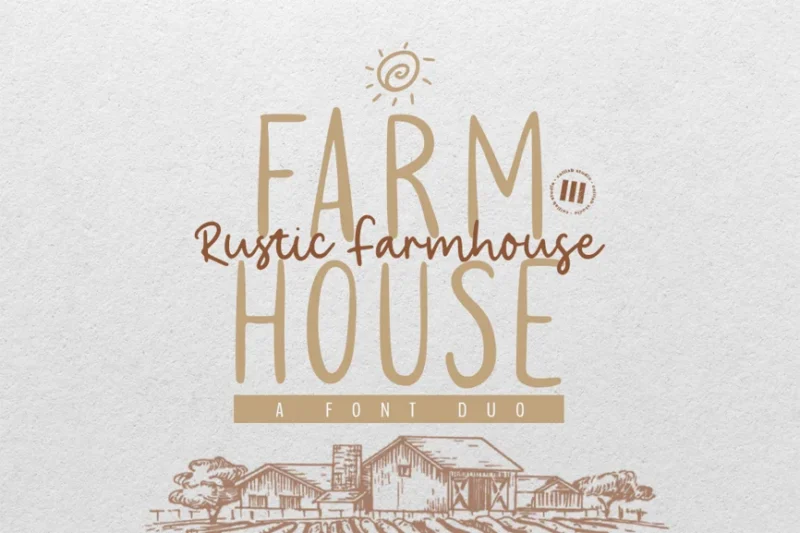
This versatile farmhouse font duo offers both script and sans-serif options, making it a go-to choice for designers working on farm-inspired projects. Its aesthetic appeal captures the essence of rustic charm and folk traditions.

Get 300+ Fonts for FREE
Enter your email to download our 100% free "Font Lover's Bundle". For commercial & personal use. No royalties. No fees. No attribution. 100% free to use anywhere.
Honeysuckle Market Fonts
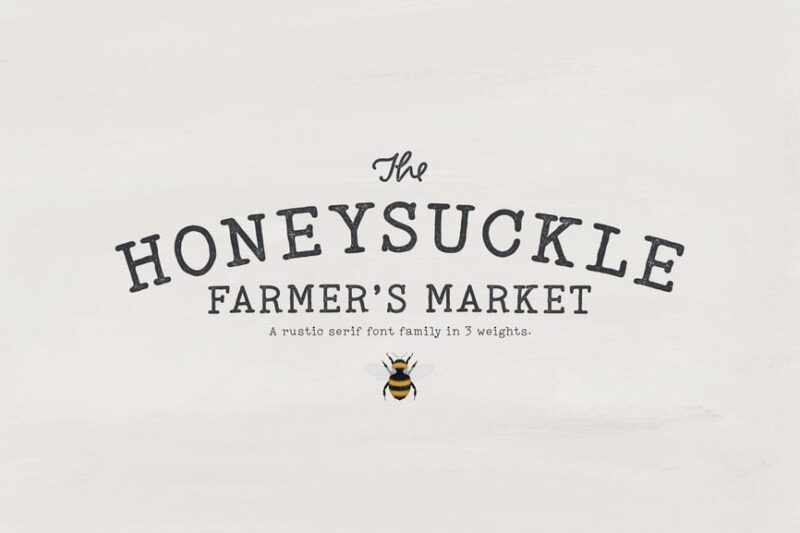
Evoking memories of quaint farm markets, this serif font family brings a touch of nostalgia to designs. Its typewriter-like feel makes it perfect for farmhouse-style branding and packaging projects that aim for an authentic, vintage look.
Farmhouse Morning Handwritten
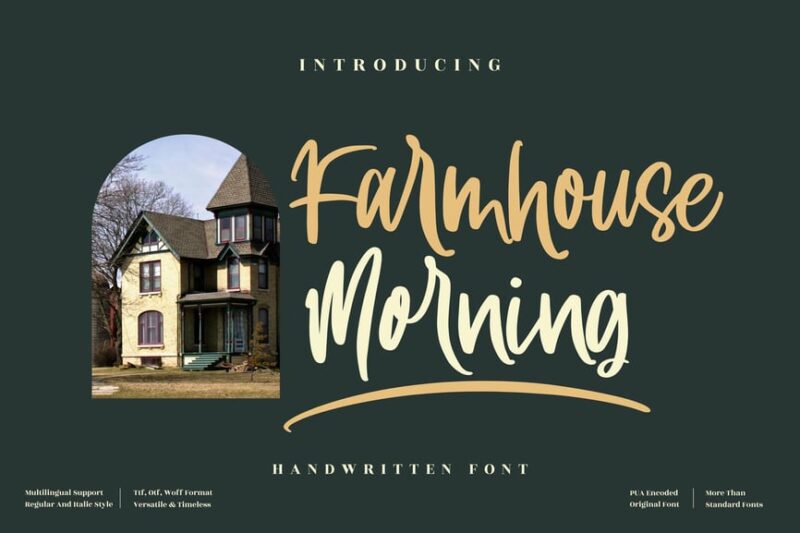
This handwritten script font captures the relaxed vibe of a lazy farmhouse morning. It’s an excellent choice for designers looking to add a personal, rustic touch to branding projects or create inviting farmhouse-themed designs.
The Farmer Font – Condensed Typeface
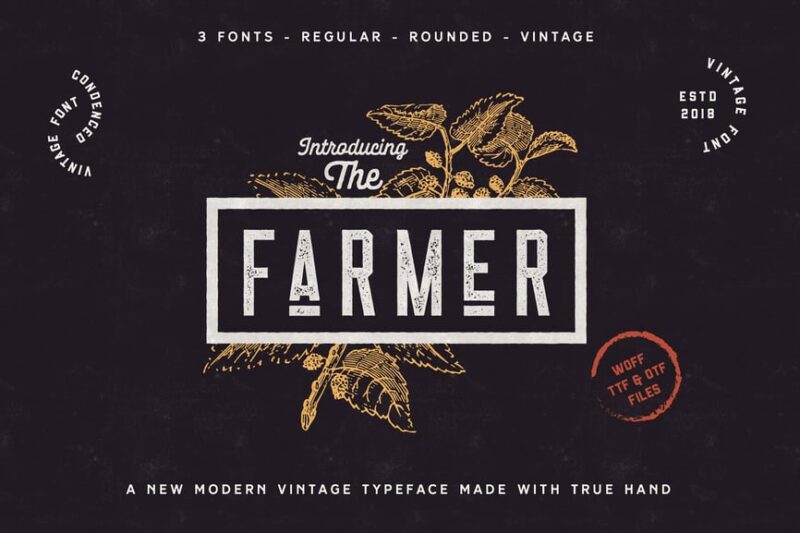
A versatile farmhouse font family that includes sans-serif, serif, script, and decorative styles. Its distressed look and agricultural symbols make it perfect for creating authentic farm-to-table branding and rustic design projects.
AL – Farmhomes
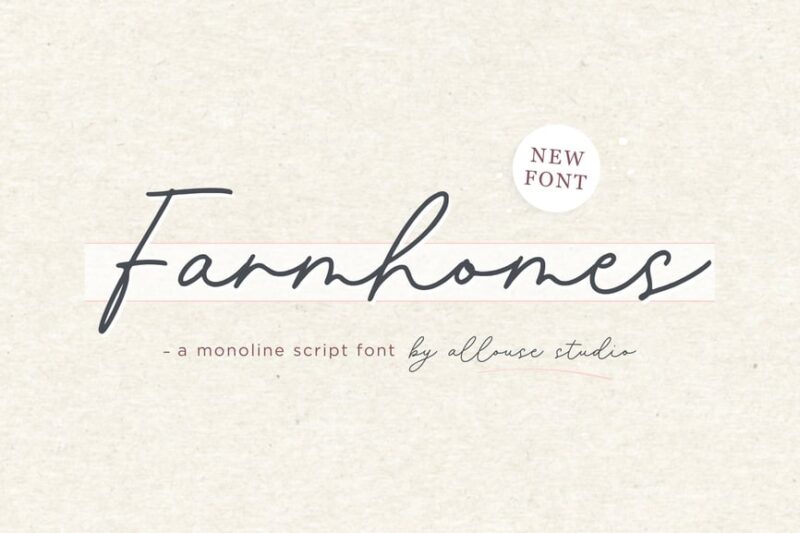
This script font embodies the charm of farmhouse living with a touch of elegance. It’s an excellent choice for wedding invitations or any project that requires a blend of rustic appeal and sophisticated farmhouse style.
Huvet
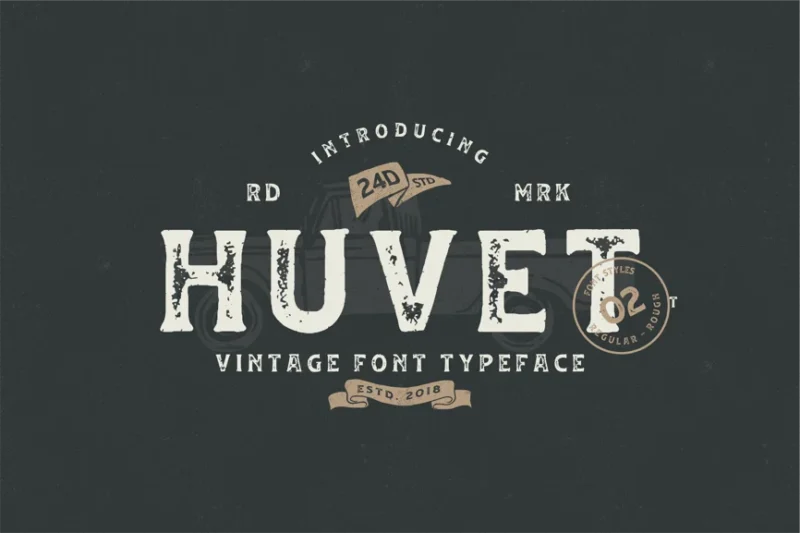
While not explicitly a farmhouse font, this serif typeface has a robust, earthy quality that suits agricultural and food-related designs. Its sturdy character makes it ideal for farm-to-table branding and rustic packaging projects.
Lodge Script
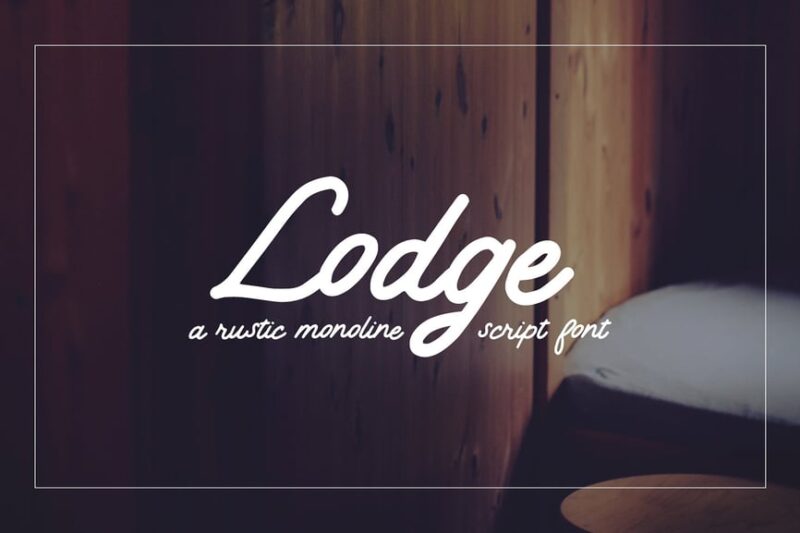
This font family combines sans-serif, script, and decorative styles with a western flair. While not strictly a farmhouse font, its rustic charm makes it suitable for country-inspired designs and outdoor-themed projects.
Wildstone – wild vintage smallcaps slab serif
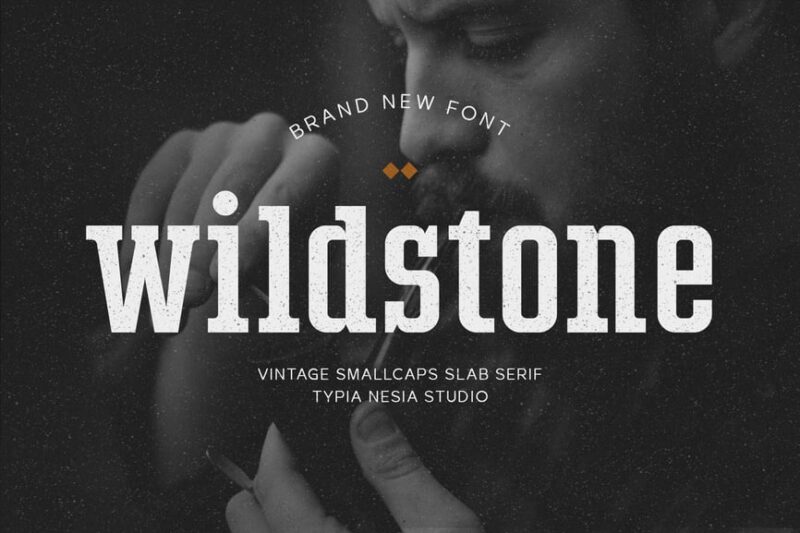
This vintage-inspired slab serif font captures the spirit of the wild west. Its rugged character makes it a great choice for designers looking to add a touch of adventure to farmhouse-themed projects or rustic branding materials.
Rustic Farm Display Font
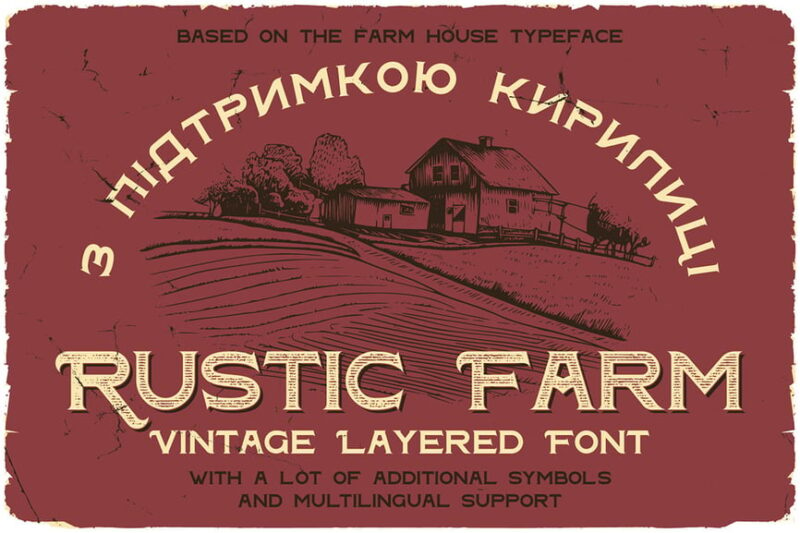
This serif display font embodies the essence of rustic farm life. Its weathered look and strong character make it perfect for creating eye-catching headlines in farmhouse-inspired designs and agricultural branding projects.
Farmyard Font
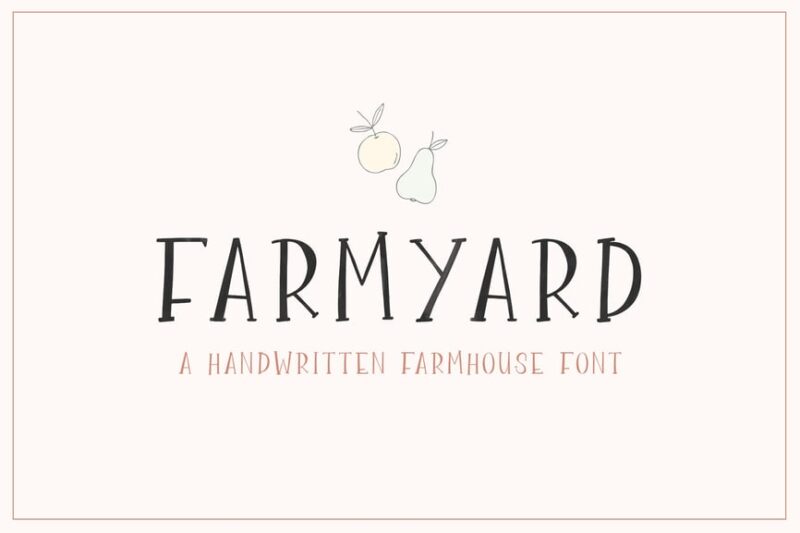
Capturing the charm of life on the farm, this serif font is ideal for rustic design projects. Its versatile nature makes it suitable for various farmhouse-themed applications, from honey jar labels to country store signage.
Thanks Farmhouse – Sans Serif Display Monoline
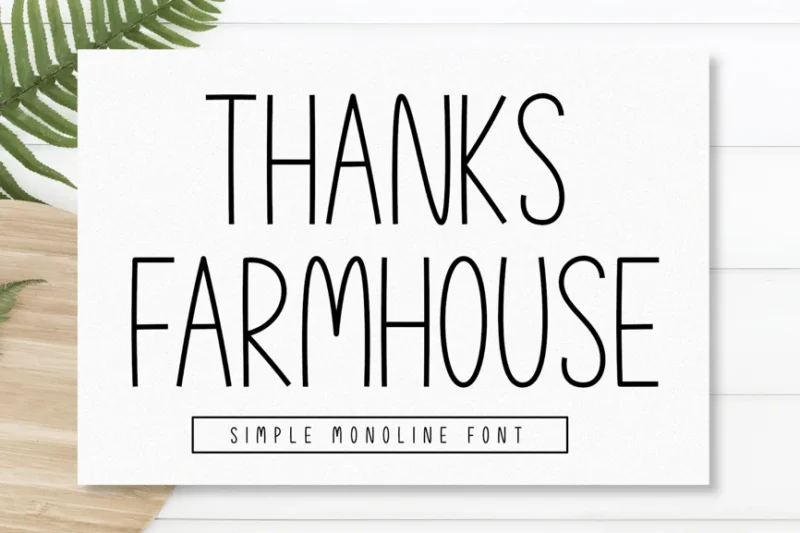
This sans-serif display font offers a modern take on farmhouse style. Its clean, monoline design makes it versatile for contemporary farm-to-table branding, particularly in the food industry, including trendy farmhouse-inspired restaurants.
My Sweet Farmhouse – Crafty Font
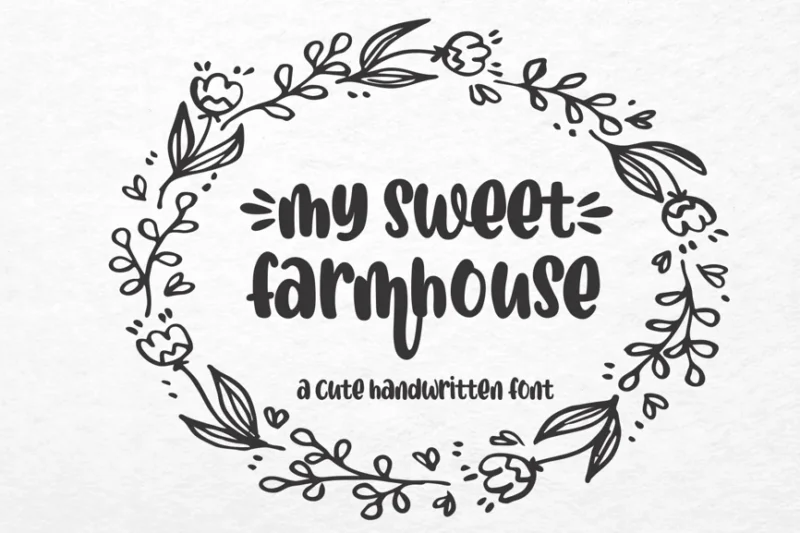
This playful, handwritten font brings a touch of whimsy to farmhouse designs. It’s perfect for autumn-themed projects or Halloween events with a rustic twist, allowing designers to create charming, season-specific farmhouse-style materials.
Farmhouse Handwritten Font
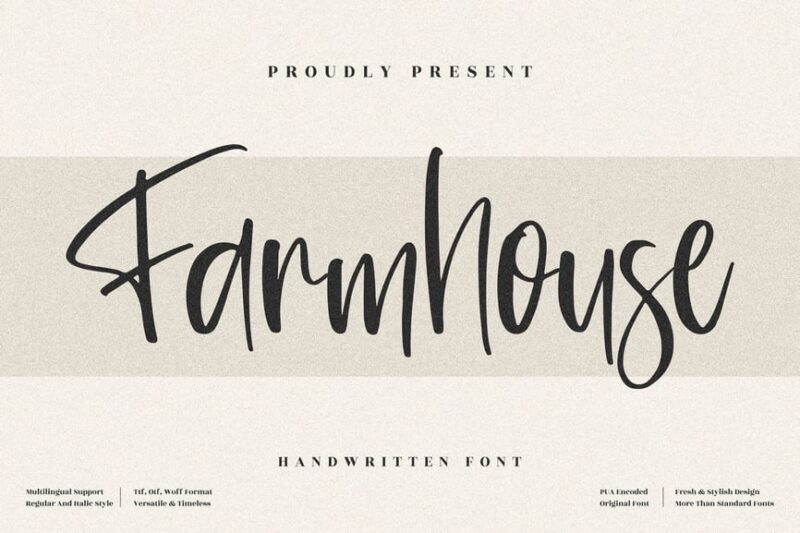
This authentic handwritten font captures the personal touch of farm life. It’s ideal for creating genuine, down-to-earth designs for farmhouse-themed projects, from artisanal honey labels to rustic wedding invitations.
Farmhouse Rustic Font
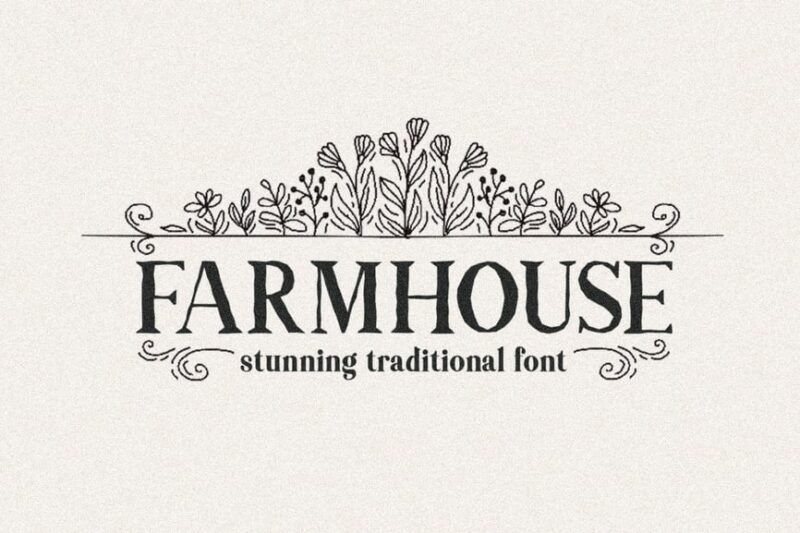
This decorative font embodies the essence of rustic farm charm. Its weathered look and unique character make it perfect for creating standout headlines and logos in farmhouse-inspired designs and country-themed branding projects.
Bushel & Peck Fonts + Dingbats
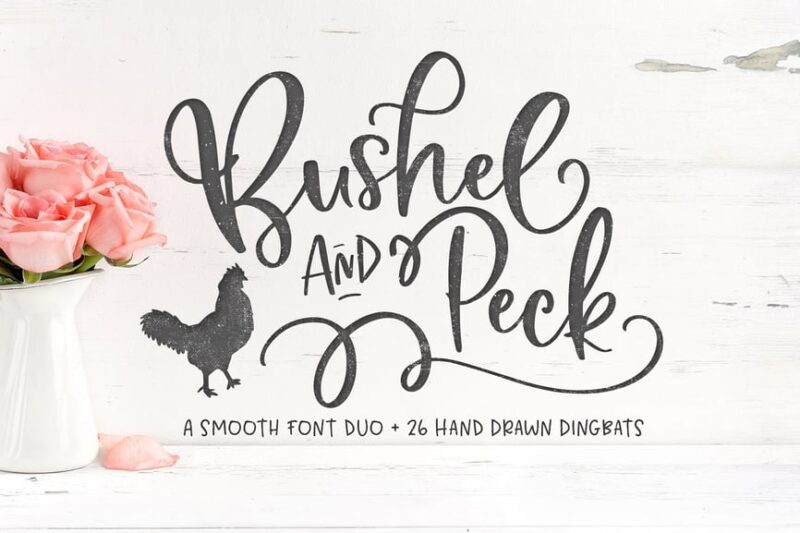
This comprehensive font family offers script, sans-serif, and decorative options, along with charming dingbats. It’s a versatile choice for designers working on country-inspired projects, allowing for creative farmhouse-style designs across various media.
Earthbound – Organic Typeface
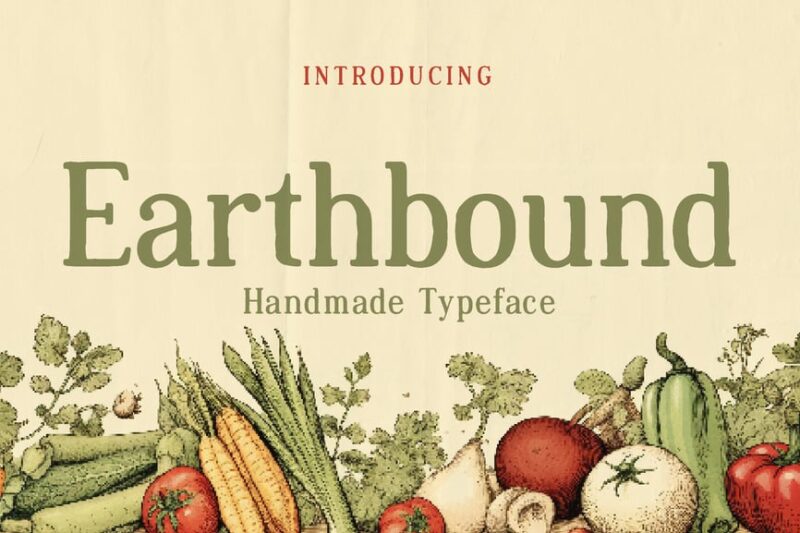
This organic typeface captures the essence of natural, farm-fresh products. Its earthy character makes it ideal for designers creating farmhouse-inspired branding for organic goods, farmer’s markets, or eco-friendly businesses.
Nomads – The Farmer Original Typeface
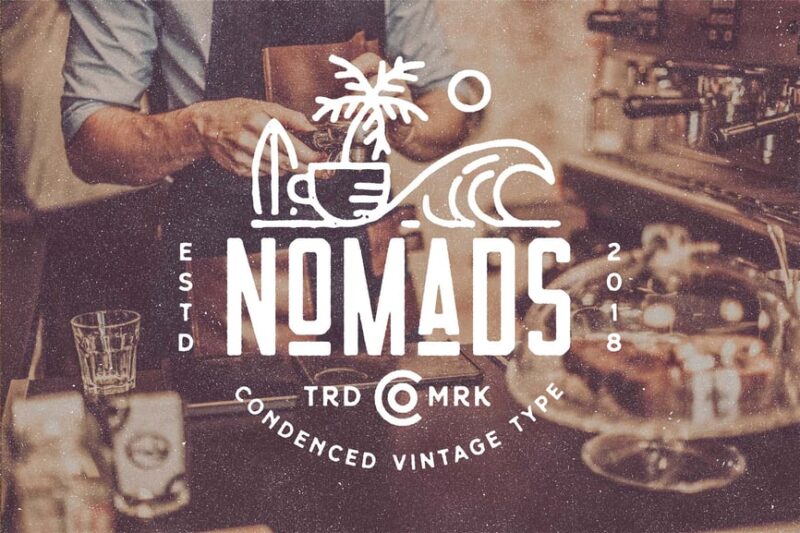
Blending hipster style with organic charm, this decorative font is perfect for modern farmhouse designs. It’s ideal for creating trendy, rustic-inspired logos and branding materials that appeal to a younger, eco-conscious audience.
Christmas Farmhouse – Christmas Font
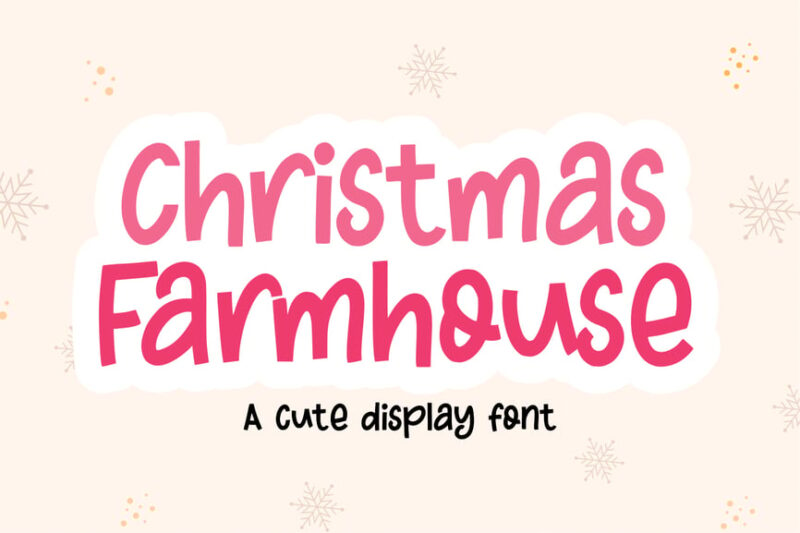
This festive script font combines Christmas cheer with farmhouse charm. It’s perfect for designers creating rustic holiday materials, allowing them to infuse warmth and country style into seasonal farmhouse-themed projects.
Francesca Handlettered Sans
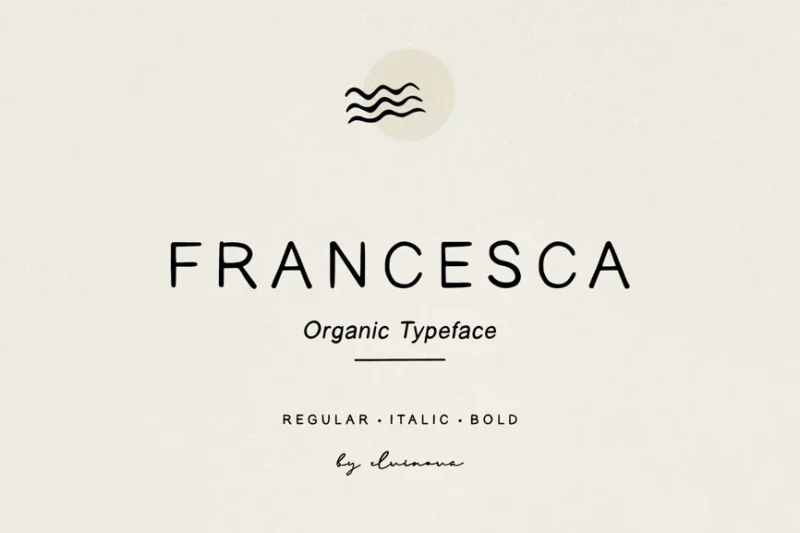
While not explicitly a farmhouse font, this handlettered sans-serif typeface has an organic, rustic quality. Its versatile nature makes it suitable for creating modern farmhouse-inspired designs with a touch of handcrafted charm.
Farmaste
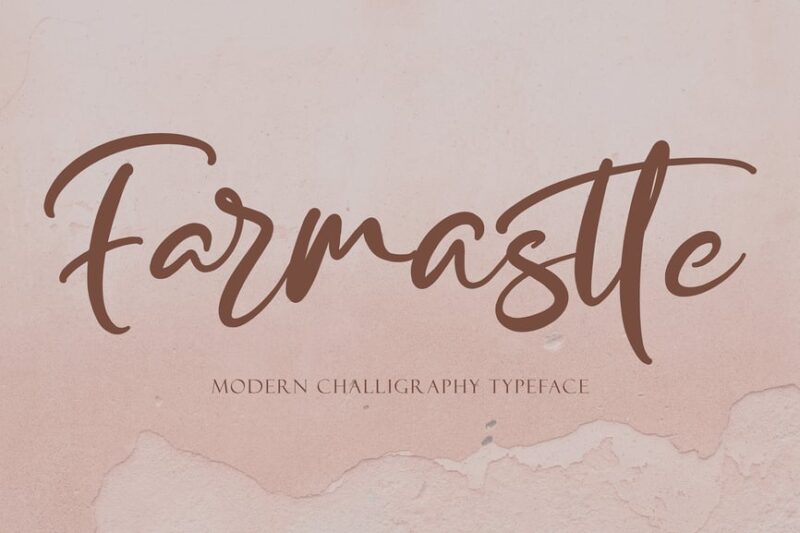
This cursive script font brings a touch of elegance to farmhouse-inspired designs. It’s perfect for creating sophisticated logos and branding materials that blend rustic charm with a refined, artisanal aesthetic.
AL Bentleycraft
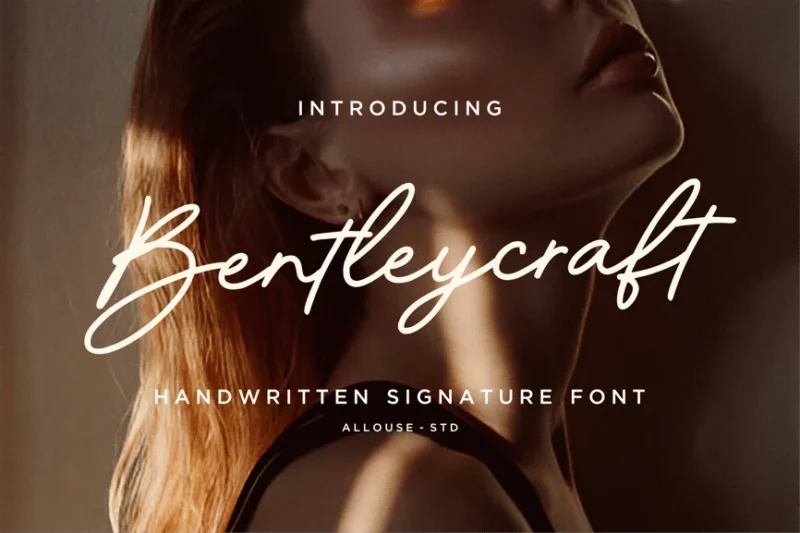
This luxurious script font adds a touch of elegance to farmhouse designs. While not strictly rustic, it’s ideal for upscale farm-to-table restaurants or high-end country retreats seeking to blend sophistication with rural charm.
Farmgarden – Monoline Font
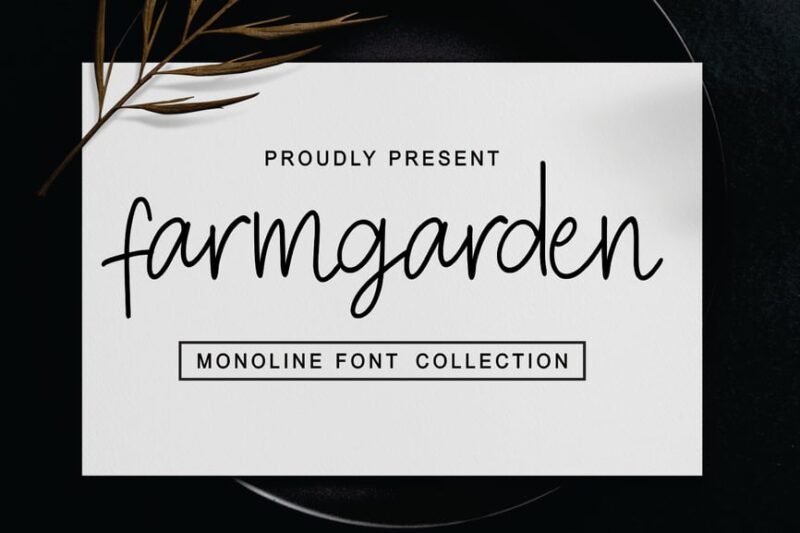
This monoline script font captures the essence of a charming farm garden. It’s perfect for creating inviting, farmhouse-inspired designs for gardening projects, farmers’ markets, or rustic outdoor events.
QF Farmgarden
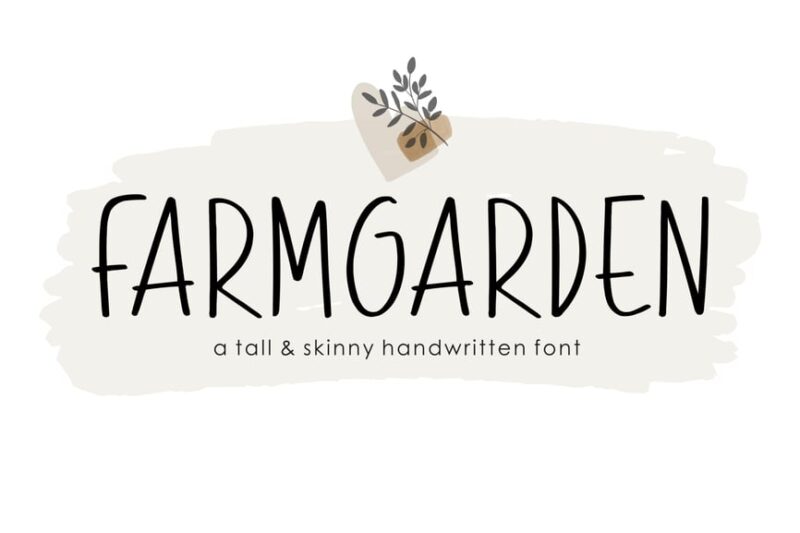
This handwritten font embodies the natural beauty of a farm garden. It’s ideal for designers working on farmhouse-themed projects related to gardening, local produce, or artisanal honey products, adding an authentic, homegrown touch.
What Makes a Font Feel “Farmhouse”?
You know a farmhouse font when you see it, but what exactly gives these typefaces their distinctive rustic charm? Let’s break down the key characteristics:
Handcrafted Authenticity
The best farmhouse fonts feel like they were hand-painted on reclaimed wood or hand-stitched onto burlap. They often feature natural imperfections—slightly uneven baselines, varied letter heights, and organic curves that mimic human handwriting. This imperfection is what makes them perfect.
Vintage Inspiration
Farmhouse fonts draw heavily from historical typography. Think old general store signs, vintage seed packets, and 19th-century advertising. Many incorporate elements from classic serif fonts but with a weathered, lived-in quality that speaks to simpler times.
Natural Textures
Whether it’s the appearance of weathered paint, rough wood grain, or hand-stamped ink, farmhouse fonts often include textural elements. These details add depth and authenticity, making designs feel tangible and real rather than purely digital.
Comfortable Simplicity
Despite their decorative nature, farmhouse fonts maintain readability. They’re approachable and unpretentious—never overly ornate or fussy. This simplicity reflects the farmhouse philosophy itself: beauty through functionality.
Where Can You Use Farmhouse Fonts?
Farmhouse fonts are incredibly versatile, working beautifully across a wide range of applications. Here’s where they shine:
Wedding Stationery
Rustic weddings have been trending for years, and farmhouse fonts are perfect for invitations, save-the-dates, programs, and signage. They create that romantic, countryside vibe couples are seeking.
Home Décor and Wall Art
From “Gather” signs above the dining table to inspirational quotes in the entryway, farmhouse fonts dominate the home décor market. They’re staples for print-on-demand sellers and craft fair vendors alike.
Restaurant and Café Branding
Farm-to-table restaurants, coffee shops, bakeries, and breweries frequently use farmhouse fonts to convey authenticity and connection to local, artisanal traditions. These fonts tell customers: “We care about where our food comes from.”
Product Packaging
Farmhouse fonts work wonderfully for products emphasizing natural ingredients, handmade quality, or heritage recipes. Think artisan soap labels, honey jars, and small-batch preserves.
Logo Design
For businesses wanting to project warmth, authenticity, and approachability, farmhouse fonts create memorable logos. They’re particularly effective for lifestyle brands, boutiques, and service-based businesses.
Social Media Graphics
Farmhouse fonts perform exceptionally well on Instagram and Pinterest, where the aesthetic aligns perfectly with popular visual trends. They’re ideal for quotes, announcements, and promotional graphics.
When to Avoid Farmhouse Fonts
While farmhouse fonts are wonderfully versatile, they’re not appropriate for every situation. Here’s when to choose something else:
Corporate and Professional Contexts
Law firms, financial institutions, and tech companies typically need typography that conveys professionalism and modernity. Farmhouse fonts might undermine credibility in these contexts.
High-Fashion Brands
Luxury fashion labels and upscale cosmetics brands generally require sleek, sophisticated typography. The rustic charm of farmhouse fonts conflicts with the polished aesthetic these brands need.
Technical Documentation
User manuals, scientific papers, and technical specifications demand clarity above all else. Farmhouse fonts, with their decorative elements, can reduce readability in these applications.
Urban/Modern Aesthetics
If your design celebrates sleek city living, minimalism, or futuristic themes, farmhouse fonts will feel tonally mismatched. Context matters.
How to Choose the Perfect Farmhouse Font
With hundreds of farmhouse fonts available, how do you select the right one? Here’s my process:
Consider Your Message
What emotion are you trying to evoke? A distressed, weathered font conveys different feelings than a clean, hand-lettered script. Match the font’s personality to your project’s purpose.
Think About Readability
This is crucial. A font might look gorgeous at large sizes but become illegible when scaled down. Always test your farmhouse font at the actual size it will be used, especially for body text or smaller applications.
Check the Character Set
Ensure your chosen font includes all the characters you need—numbers, punctuation, special characters. Nothing’s worse than falling in love with a font only to discover it’s missing essential glyphs.
Mind Your Medium
Some farmhouse fonts work beautifully in print but lose their charm on screen. Others are optimized for digital use. Consider where your design will ultimately live.
Pair Wisely
Farmhouse fonts often work best when paired with complementary typefaces. A rustic display font for headlines paired with a simple, readable sans-serif for body text creates beautiful hierarchy.
Pairing Farmhouse Fonts Like a Pro
The secret to professional-looking farmhouse designs? Strategic font pairing. Here are some proven combinations:
Farmhouse Script + Clean Sans Serif
Pair a flowing farmhouse script with a modern sans serif like Montserrat or Open Sans. The contrast creates visual interest while maintaining readability.
Distressed Display + Classic Serif
Combine a weathered farmhouse display font with a traditional serif like Garamond. This pairing balances rustic charm with timeless elegance.
Hand-Lettered + Simple Sans
Use a hand-lettered farmhouse font for key messaging and pair it with a straightforward sans serif for supporting text. This keeps designs from feeling too busy.
Two Farmhouse Fonts with Different Weights
If you’re committed to an all-farmhouse aesthetic, choose fonts with distinctly different weights and styles—maybe a heavy slab serif with a delicate script—to create contrast.
Tips for Designing with Farmhouse Fonts
Ready to put your farmhouse fonts to work? Keep these design principles in mind:
Embrace White Space
Farmhouse design is about simplicity. Don’t clutter your layouts. Give your typography room to breathe, just like those airy, open-concept farmhouse interiors.
Use Natural Color Palettes
Stick with colors inspired by nature—warm neutrals, soft greens, gentle blues, and creamy whites. These complement farmhouse fonts beautifully and reinforce the rustic aesthetic.
Layer Thoughtfully
Many farmhouse fonts come with multiple layers or shadow options. Use these strategically to add depth, but don’t overdo it. Sometimes simple is best.
Consider Texture
Pair your farmhouse fonts with textures like wood grain, linen, burlap, or watercolor washes. These elements work together to create cohesive, authentic designs.
Mind Your Hierarchy
Use size, weight, and color to establish clear visual hierarchy. Your most important message should stand out, with supporting information properly subordinated.
Test in Context
Always view your designs in their intended context. A font that looks perfect on your computer screen might read differently on a printed invitation or a phone screen.
Farmhouse Font Alternatives
If you’re not finding exactly what you need in dedicated farmhouse fonts, these alternatives can achieve similar aesthetic goals:
Vintage Serif Fonts
Classic serifs with a vintage feel—like Clarendon or Rockwell—can provide that timeless, heritage quality without being overtly rustic.
Casual Script Fonts
Relaxed script fonts with organic movement can deliver farmhouse charm, especially when combined with appropriate design elements.
Slab Serif Fonts
Bold slab serifs have that sturdy, grounded quality that aligns well with farmhouse aesthetics. They’re particularly effective for headlines and logos.
Hand-Drawn Display Fonts
Any font with a handcrafted, artisanal quality can work within the farmhouse aesthetic, even if not specifically designed as a “farmhouse font.”
Common Farmhouse Font Questions
What makes a font look farmhouse?
Farmhouse fonts typically feature handcrafted qualities, vintage inspiration, natural textures, and comfortable simplicity. They often look weathered, hand-painted, or inspired by historical typography from rural America.
Are farmhouse fonts free?
Some farmhouse fonts are free for personal use, while others require licensing for commercial projects. Always check the license terms before using a font in client work or products you’re selling. Many designers offer both free and premium versions.
What fonts work with farmhouse style?
Classic options include distressed serifs, casual scripts, hand-lettered fonts, and vintage-inspired display faces. Popular choices include fonts like Hammersmith One, Bebas Neue, and various handwriting fonts with rustic qualities.
Can I use farmhouse fonts for logos?
Absolutely! Farmhouse fonts work beautifully for logos, especially for businesses in hospitality, retail, food and beverage, or lifestyle sectors. Just ensure the font remains legible at all sizes and reproduces well across different media.
How do I make text look farmhouse?
Beyond choosing a farmhouse font, consider adding textures, using natural color palettes, incorporating vintage graphic elements, and pairing fonts strategically. The overall design context reinforces the farmhouse aesthetic.
The Evolution of Farmhouse Typography
Farmhouse style isn’t just a fleeting trend—it’s rooted in centuries of American design tradition. Understanding this evolution helps us use these fonts more authentically.
The aesthetic draws from 19th-century rural America, when hand-painted signs advertised general stores and hand-lettered labels identified preserve jars. Typography was functional first, decorative second. Letters were often irregular because they were painted by hand, not mechanically reproduced.
This authenticity—the honest acknowledgment of human imperfection—is what modern farmhouse fonts seek to recapture. In our increasingly digital world, these typefaces connect us to a simpler time when things were made by hand and built to last.
The modern farmhouse movement, popularized by designers like Joanna Gaines, has brought this aesthetic to mainstream audiences. But the typography predates the trend by generations, which is why it feels so timeless.
Creating Your Own Farmhouse Lettering
While commercial fonts are convenient, creating your own hand-lettering adds unique authenticity to farmhouse designs. Here’s how to get started:
Study Historical Examples
Look at vintage signs, old advertisements, and antique packaging. Notice the letter forms, spacing, and decorative elements. Understanding the roots of farmhouse style will inform your own work.
Practice Inconsistency
This sounds counterintuitive, but authentic farmhouse lettering isn’t perfectly uniform. Practice varying your baseline slightly, making letters subtly different sizes, and adding natural movement to your strokes.
Experiment with Tools
Try different implements—brush pens, chalk, paint markers—to see what creates the textures you want. Each tool produces distinct characteristics that can enhance your farmhouse aesthetic.
Embrace Imperfection
Don’t correct every wobble or uneven stroke. Those “mistakes” are what make hand-lettering feel genuine and human. The goal isn’t perfection; it’s authenticity.
Conclusion: Bringing Farmhouse Charm to Your Designs
And there you have it—everything you need to know about using farmhouse fonts effectively in your designs. From understanding what makes these typefaces feel authentically rustic to knowing where and how to use them, you’re now equipped to bring that cozy, welcoming farmhouse aesthetic to any project.
The beauty of farmhouse fonts lies in their ability to make designs feel warm, approachable, and genuine. In a world of sleek minimalism and digital perfection, these fonts remind us of simpler times—of handcrafted quality and honest, unpretentious beauty.
Whether you’re designing wedding invitations, creating home décor, developing a brand identity, or just want to add some rustic charm to your social media graphics, farmhouse fonts offer incredible versatility. Just remember to choose fonts that suit your message, pair them thoughtfully, and always prioritize readability.
So go ahead—embrace those weathered edges, celebrate those imperfect baselines, and let your designs radiate the warmth and authenticity that only farmhouse typography can deliver. Your audience will feel the difference.
Now I’d love to hear from you! What are your favorite farmhouse fonts? How do you incorporate them into your designs? Drop a comment below and let’s keep the conversation going!

